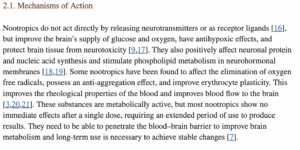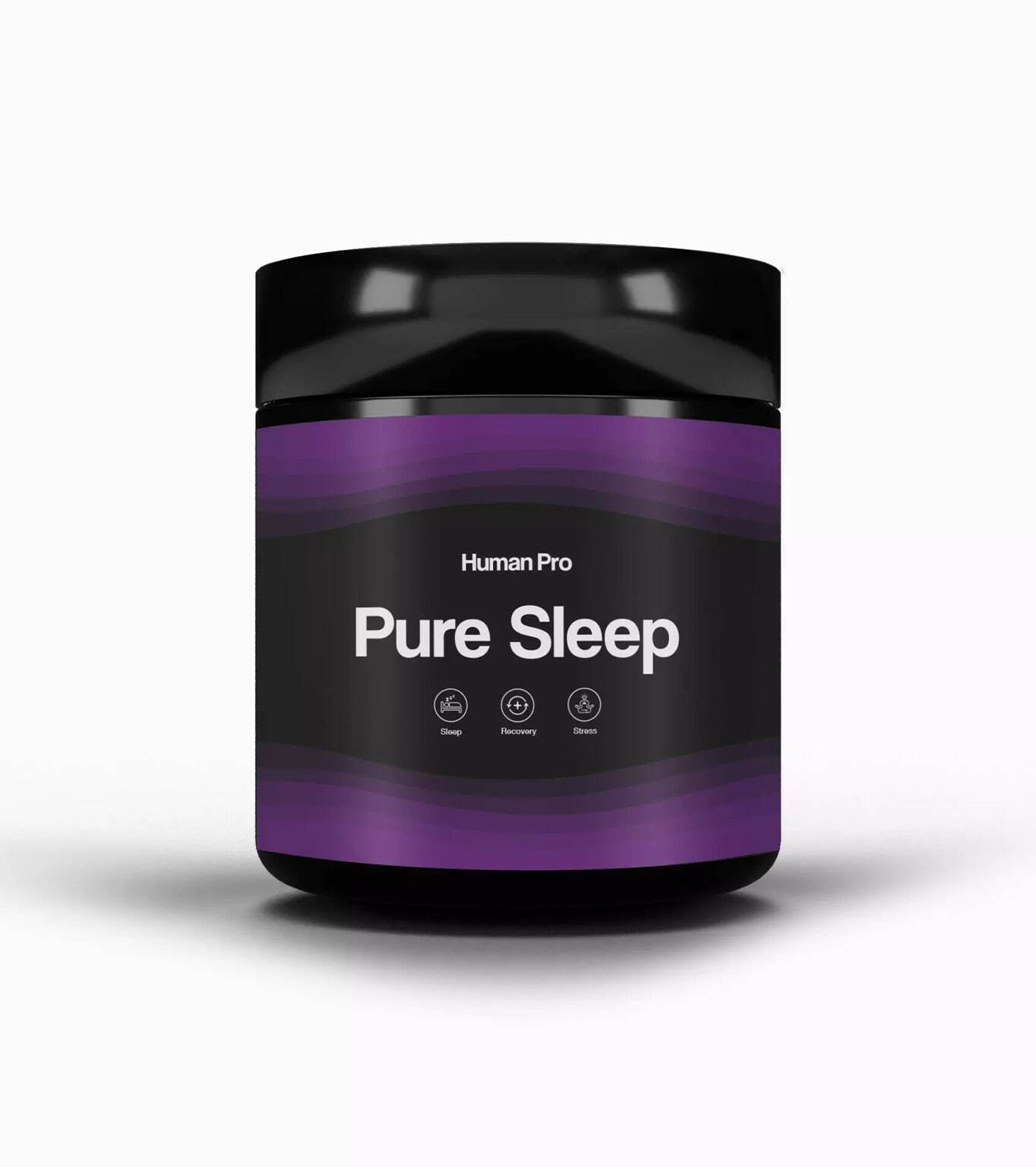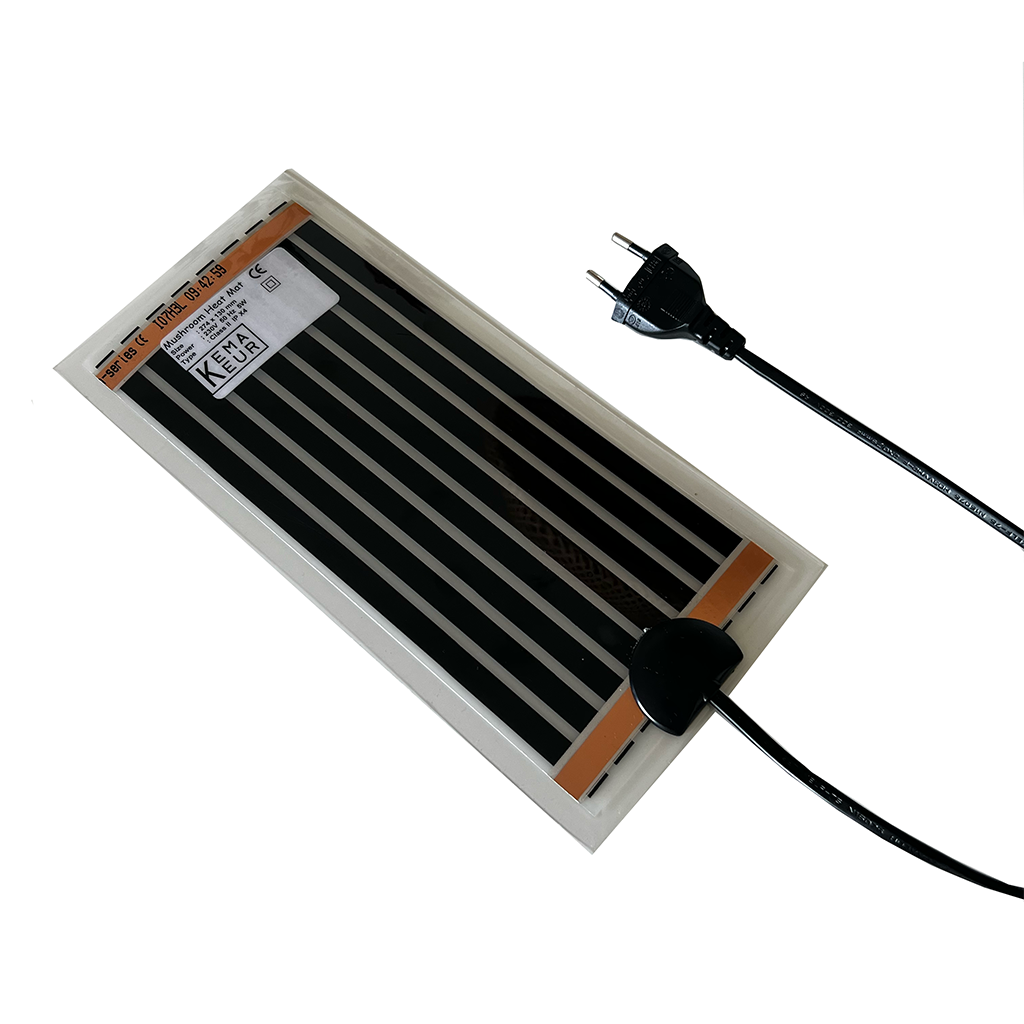The 4 Pillars of a Healthy Brain
One of the questions we get asked most at Microdose Pro and Human Pro, is how to increase, optimize, and boost brain power.
Young or old, newbie, amateur or pro, everyone wants to feel more focused, think clearer, and be more efficient overall.
The truth is that there isn’t a short answer to this question.
The key here to focus on in my opinion is brain health, from a holistic standpoint.
This means that we need to focus on not just the brain to keep the brain in good shape.
Makes sense?
When we keep our brains healthy, the desired second-order effects that people aim for like more focus and clarity will automatically follow.
With so many aspects to be considered, I will do my best to cover them all here.
Feel like clearing some mental cobwebs? Keep reading; I’ve got some great tips.
The way I see it is that there are four main pillars to maintaining a sharp cognition.
I define these four pillars as Movement, Novelty, Building Blocks, and Waste Removal.
Below, I’ve unpacked each of these four categories. I’ve listed the activities and/or supplements that may boost brain power and keep us sharp long term.
There is quite a lot of information here, and I have extrapolated as much as possible while maintaining brevity.
Some of my recommendations may already be known to you, while other recommendations may be new.
I encourage you to research further yourself where applicable.
Ready? Let’s go.
1. Movement
1.1 Resistance Training and Neuroplasticity
Movement, in the context of brain health, goes beyond physical exercise.
As it turns out, resistance training may boost neuroplasticity.
Neuroplasticity refers to the brain’s ability to reorganize and adapt by forming new neural connections.
The idea of resistance training for neuroplasticity may sound unrelated but in fact, physical movement is the precursor for certain brain activity.
Resistance training not only works on the body but also encourages the brain to forge new pathways, enhancing cognitive function and memory.
1.2 Morning Walks for Lateral Eye Movements and Limbic System Ease
This may sound dramatic to some, but morning walks are indeed life-changing.
Not only is morning light optimal for a balanced circadian rhythm, but the activity of moving through space activates lateral eye movements.
Why are lateral eye movements so important to our mood?
We move through space when walking, running, or swimming. The act of observing our surroundings, looking left and right, reduces activity in the amygdala, our threat response center.
This simple action stimulates various parts of the brain, soothes us back into a sympathetic state, and can even assist in integrating memories and emotions.
Engaging in this chilled form of movement is more than a ‘good’ habit; it’s genuinely an investment in long-term mental well-being.
1.3 Meditation
I’ve included meditation as a powerful part of the movement category because it is an activity that we must generally consciously engage in.
The intentional act of sitting down to meditate daily is not a given for most of us. It takes intent, discipline, and consistency.
The list of benefits is arguably as long as the list of meditation techniques available.
Harvard Health found that:
“..the older adults randomized to the mindfulness intervention showed improvements in sustained attention — improvements that were maintained at the six-month follow-up visit. They also found changes in brain physiology that correlated with the improvement in attention”
When it comes to meditation, it’s not about which one we practice, but are we practicing regularly, this is the question.
1.4 Heart Rate Variability (HRV)
HRV is the variation in time between each heartbeat.
HRV is influenced by your stress levels, sleeping patterns, and changes in your emotions and activities throughout the day.
Higher HRV can be a sign that your body adapts well to changes in your environment and different levels of stress.
On the flip side, if you are chronically stressed or dealing with depression, your HRV might be lower.
A healthy HRV score is around 60-70 whereas some athletes are in the 90-100 zone.
If our daily routine includes peaks such as physical exercise and moments of non-sleep deep rest NSDR such as meditation, then the HRV is likely to be higher and therefore optimal.
Regular monitoring of HRV can provide valuable insights into the body’s state of well-being, with implications for brain health.
2. Novelty
Adapting to new environments is so good for the brain.
Exposing ourselves to new surroundings is a great way to induce new neural pathways in the brain.
Any kind of novelty, whether it’s a new city, a new job, or even rearranging the furniture at home, these changes are good for the mind.
This kind of adaptability helps keep the brain flexible and resilient, enhancing overall cognitive function.
2.1 Travel
One of my favorite things about traveling to new places is how quickly the unknown becomes familiar.
Upon arrival, everything seems new and requires our full attention. In just a few days, we feel more comfortable and the environment is more familiar.
Exposure to different cultures, languages, and experiences offers mental stimulation like nothing else.
When we are on the move, we are vulnerable to anything and everything.
The name of the game is to navigate whatever situation we are faced with, a perfect neuroplasticity inducer!
2.2 Learning a New Language or a Musical Instrument
Taking up a new language or learning a musical instrument is a robust and admirable mental exercise to undertake.
These skills demand various cognitive skills, from memory and concentration to logical thinking and pattern recognition.
The complexities of grammar, pronunciation, and vocabulary provide a rich workout for the mind.
Not to mention learning the art of timing, rhythm, and tone uniquely boosts cognitive function
Unfortunately, I don’t play any instruments at the moment. Maybe I should start before the year ends. Hmmmm, I just might consider it.
2.3 New Hobbies or Lifestyle Activities
Activating our beginner’s mind is a brain booster.
Learning something new like skateboarding, surfing, drawing, dancing, or even doing a handstand activates parts of the brain that may have never been activated before.
Leaving the comfort zone to craft a new skill is an excellent way to keep our brains sharp and young.
2.4 Psychomotor Exercises
Psychomotor exercises combine cognitive functions with motor skills. Activities like dancing, martial arts, or any sport requiring coordination and strategic thinking fall into this category.
These exercises enhance both physical and mental agility.
This is my favorite example of a psychomotor skill that can be learned, and this one, you might remember from your university days.
Dit bericht op Instagram bekijken
3. Waste Removal
Have you ever heard of glial cells? If so, do you know how are they linked to brain health and waste removal?
If not, read on.
Glia cells play a vital supporting role in the brain, from nourishing neurons to repairing damage. These cells are also essential for the brain’s waste management system.
Ensuring glial cell health through proper nutrition and lifestyle choices is integral to a well-functioning brain.
According to Wikipedia, “Glia, also called glial cells (gliocytes) or neuroglia, are non-neuronal cells in the central nervous system and the peripheral nervous system that do not produce electrical impulses.
The neuroglia makes up more than one-half the volume of neural tissue in our body.
They maintain homeostasis, form myelin in the peripheral nervous system, and provide support and protection for neurons.”
3.1 Fasting and Calorie Restriction
Intermittent fasting, keto diets, and longer fasting periods are deeply beneficial to the maintenance of healthy glial cells, balanced hormones, and robust cognitive health.
Some people practice fasting every year and in conjunction with a religious ritual, others fast once every season as part of their health protocol, while some practice intermittent fasting daily.
Regardless of the fasting routine that works for you, calorie restriction is deeply beneficial to our brains and our bodies.
3.2 Quality Sleep
Sleep is the brain’s natural way of cleansing itself.
During deep sleep, the glymphatic system, a network that clears waste products from the brain, becomes active.
Brain fog is definitely to be expected when we don’t sleep well.
Clearing out cells, chemicals, hormones, and fluids from our brains on a nightly basis is necessary for us to function properly during the day.
During REM and NREM sleep, these cleaning episodes occur.
There is so much to say about overall health and quality of sleep that I will link you to Dr. Mathew Walker and his interview with Joe Rogan.
He says it all and he explains it best.
3.3 Cellular Hydration
Water is the primary component of the human body, and the brain is no exception.
Our brain takes up a lot of energy and needs adequate hydration. Adequate water intake ensures that the brain’s waste removal system works efficiently.
However, hydration is not just about drinking water.
In Ayurveda, the recommendation is to eat your water whenever possible.
Also worth keeping in mind that drinking a lot of water does not necessarily mean we are hydrated at a cellular level.
Herbal teas like Sea Moss can be deeply beneficial to cellular hydration and therefore a strong ally in brain health.
4. Building Blocks
4.1 Foods and Supplements
The foods we consume play a fundamental role in brain health.
Supplementing with nutrient-rich foods provides the essential building blocks for the brain.
Omega-3 fatty acids, antioxidants, vitamins, and minerals are just some examples of vital nutrients.
Here’s my short list of favorite foods and supplements:
- Omega-3 Fatty Acids: Found in fish oils, linked to brain health.
- Berries and Antioxidants: These might help in maintaining cognitive function.
- Turmeric: Antioxidant and anti-inflammatory and known to cross the blood/brain barrier
- Dark Chocolate: Flavanoids in chocolate may support learning and memory
- Eggs: Choline and B vitamins found in eggs have several roles in supporting brain health
- Green Tea: A natural source of L-theanine, polyphenols, and antioxidants
4.2 Nootropics
Supplements like nootropics, are currently being studied for their potential ability to support brain health.
“The term nootropics was coined by C. G. Giurgea, a chemist and psychologist who also developed Piracetam, one of the first cognition-enhancing drugs. The word itself comes from the Greek words nous for “mind” and trepien for “to bend.”
Nootropics, occasionally known as “smart drugs” or cognitive enhancers, are substances that some believe may improve cognitive function in healthy individuals.
What are the mechanisms of action for nootropics?
“They improve the brain’s supply of glucose and oxygen, have anti-hypoxic effects, and protect brain tissue from neurotoxicity […]
Some nootropics have been found to affect the elimination of oxygen free radicals, possess an anti-aggregation effect, and improve erythrocyte plasticity.”

Even though nootropics started as pharmaceutical products, some supplements have since become known for their alleged nootropic features.
Here’s a look at some common nootropics:
- Caffeine: Turns the brain on!
- Lion’s Mane Mushroom: This has been studied for cognitive benefits.
- Creatine: Found in meat and fish, it’s connected to mental clarity.
- L-Theanine: Paired with caffeine, it calms jitters
- L-Tyrosine: Important for mood, alertness, and stress management
- Ginkgo Biloba: Widely believed to support mental focus
- Rhodiola Rosea: is an adaptogenic herb that supports overall stamina
4.3 Supplements for Heart Health
The Heart and Brain Connection.
Some research suggests that the heart has a network of neurons and can communicate with the brain.
This has led to the idea that the heart has a type of “intelligence” of its own, playing a role in emotional processing.
The heart’s electromagnetic field is strong and can affect other parts of the body.
The heart’s intrinsic cardiac nervous system consists of around 40,000 neurons.
These neurons are not as complex as those in the brain, but they can process information, sense, feel, learn, and remember.
This network is referred to as the “heart brain.”
Here are some supplements for the heart-brain connection:
- Omega-3 Fatty Acids: Good for the heart
- Coenzyme Q10 (CoQ10): Might help heart health
- Magnesium Citrate and Magnesium Glycinate: Regulates heart rhythm
- Vitamin D: Linked to overall heart health
That Gut Feeling!
Our gut is ground zero for many brain functions like mood regulation and intuition.
In less than two decades, we have learned so much about the brain, neuroscience, and the role of the implications of digestive health within it all.
Not that long ago, science adamantly concluded that the brain is NOT plastic but rather set in its ways after a certain age.
It was not that long ago that we believed brain cells are only located in and produced in the brain.
All of the above has since been debunked.
Today, we understand that the brain is indeed plastic, and more serotonin is produced in the gut than in the brain.
The gut is the boiler room for our entire body.
The better we take care of it, the better we feel, on all levels.
4.4 Supplements for Gut Health
Below is my extensive list of gut-supporting supplements, vitamins, and minerals.
- Probiotics: Often referred to as “good” bacteria they help keep the gut healthy.
- Prebiotics: Prebiotics are non-digestible fibers that feed the good bacteria in the gut like garlic, onions, and bananas are natural sources.
- Soluble Fiber: Supporting beneficial gut bacteria and promoting regular bowel movements.
- Zinc: This mineral might help in maintaining the integrity of the intestinal lining.
- L-Glutamine: An amino acid that could support the integrity of the intestinal wall and is often cited for its potential role in gut health.
- Vitamin D: Some research has suggested that Vitamin D might play a role in maintaining a healthy gut microbiome.
- Herbal Supplements: Certain herbs like peppermint and ginger might aid in digestion and support a healthy gut.
- Antioxidants: Vitamins like Vitamin C and E might help protect the cells lining the intestines.
- B-Vitamins: Certain B vitamins, such as B12 and folate, may also support gut health through various metabolic processes.
- Aloe Vera: In supplement or raw gel form, it is sometimes used to soothe and nourish the digestive tract.
- Collagen: Some believe that collagen supplements might support the gut lining, though more research is needed in this area.
- Zeolite: Known for its adsorbent capabilities, meaning it can bind to certain substances. Some believe this property may help in binding to unwanted particles in the digestive tract.
Recap
The four pillars of brain health —Movement, Novelty, Waste Removal, and Building Blocks— form a delicate ecosystem that is interconnected and multifaceted.
Being mindful of these is a robust approach to nourishing, stimulating, and maintaining a healthy brain.
Embracing new experiences, proper nutrition, restorative sleeping, and maintaining physical health are all parts of a well-rounded approach to mental well-being and optimal brain power.
Small, consistent changes can lead to a significant improvement in brain health.
Like a sharp Japanese sword, a lot of care, attention, and repetition is required to enjoy a sharp mind.
The Human Pro ethos is all about optimizing output for a better quality of life, to be in line with an upgraded version of yourself.
I hope that this article has helped guide you toward a sharper mind and boosted brain power.
May you easily access flow state, make your dreams come true, and of course have a blast doing it!
Let me know how many of these you’ve already incorporated into your life and how it has helped you.
If I’ve left anything out comment here below or via our Facebook group and/or Discord channel members.
Asha ✨







0 thought on “The 4 Pillars of a Healthy Brain”